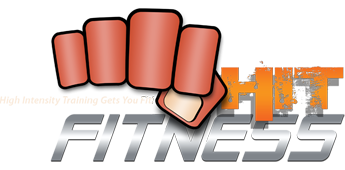What Is High-Intensity Interval Training (HIIT)?
What Is HIIT (High-Intensity Interval Training)?
HIIT workouts are usually combined with short bursts of high intensity exercise with periods of rest or a lower-intensity exercise after. HIIT usually covers anaerobic (process that does not use oxygen – think: jumping) and aerobic (process that uses oxygen – think: walking) exercises.
One big advantage of HIIT is that you can gain maximal health benefits in minimal time. You can get a fantastic workout in twenty to thirty minutes max and get the same benefit of a one hour or two hour workout. Not to mention, you burn a lot more calories during this period and after the workout. Due to the EPOC effect. Which I will explain.
Excess post-exercise oxygen (EPOC) consumption is a measurably increased rate of oxygen intake following high intensity activity. During the recovery process, the body restores itself at a resting state and adapts to the exercise just performed. This will include hormone balancing, fuel stores, cellular repair, and anabolism. The EPOC effect is greatest soon after you are done exercising and decreases at a lower level over time.
Who/What Is It Best For:
I think HIIT can be for anyone, from beginners to advanced. Again, if you are new to this, start slow and gradually go higher on your intensity as the weeks go on. Stick to body weight exercises. Get the form right and feel confident. When that happens, switch it up every once in awhile. If you don’t have any experience working out, let’s start focusing on building up your fitness and knowledge of proper movements. You can do this with lower intensity forms of exercise, like personal training sessions with a trainer, before jumping into a HIIT class. If you are looking to get lean, build some lean body mass, get your cardiovascular up and lose weight, this type of workout can be for you.
There are so many ways you can approach this method. Pick five exercises – go one (1) minute work then (1) one minute off. Remember you need to get that heart rate up to at least 80 – 85 percent of your heart rate max. Another option is a Tabata class. This involves picking a few exercises where you do (8) eight rounds on (20) twenty seconds on and (10) ten seconds off and do that exercise 8 (eight) rounds. Then you can move on to the next. This personally is one of my favorites. It’s very time efficient. If you’re pressed for time for a workout then a HIIT workout is for you.
What to Expect From HIIT Class (what type of workout is this, what will happen during a class?)
HIIT classes usually involve high-intensity bursts of hard work with only a short rest period in between. Going to a HIIT class is an exercise in extreme energy expenditure. HIIT classes are often tough but they may be shorter than other classes your studio or gym offers. As intimidating as it can be, nothing beats pushing yourself to your physical limits! Every class will be different. There could be longer work periods or shorter with more exercises.
Benefits of HIIT; Safety Considerations (is there anyone with any type of injury who shouldn’t do this class? are there any injuries common from these classes?)
Remember this is a high intensity class, and if you’re injured, you might want to sit this one out until you get better.
If you push yourself too soon, you could make your recovery take a lot longer or make your injury worse. So make sure that you get the go ahead from your doctor or physical therapist. Yes, you can get injured doing a class. Such as a pulled muscle, torn ligament or tendon and most importantly don’t drive yourself into Rhabdomyolysis (Rhabdo). Rhabdo is a serious condition when you’re exercising so hard and overexert yourself. This can also occur after your workout. Don’t overwork yourself. Stay hydrated and know your limitations.
What Workout Is Similar to It? What are the pros and cons between the two?
There are many workouts out there that are similar that you can do. Here are some pros and cons for a HITT workout:
Pros: time efficient, Can be done ANYWHERE you are. Changeable.
Cons: Risk of injury, Potential risk to joint and heart health, Non qualified trainer.
What to Wear to a HIIT Class:
Your clothing should be comfortable and functional, meaning you can move in it. You want something that can stretch and absorb sweat. Warning you’re going to sweat your butt off! Also, find a pair of sneakers that you love, that fit right to you. If your feet are uncomfortable, the rest of you will be too.
How to Get Started With HIIT (do you need to start slow? any equipment needed?)
First let’s talk about going into this slow. If you are a beginner, get to know the basics first, get your form down and conditioning up. Remember this is a HIIT Class. You don’t need any equipment if you don’t have any to get started. Just using your body as weight is fine and effective. You can use house hold items such as soup cans, water bottles, gallon of milk, and if your outside, tree branches, rocks, use a hill to run on. There are so many options. If this is your first time doing a class remember to start slow, stay hydrated and have fun!
Dan Bowen, NPTI, NASM
Personal Trainer
